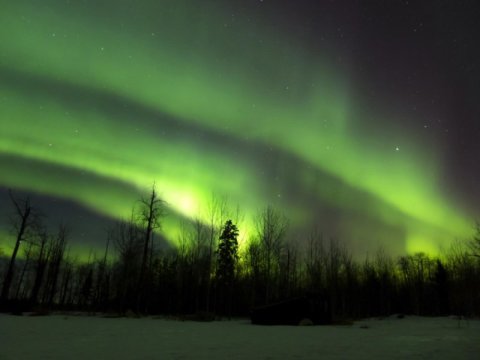Scientists at the University of Bath have availed novel insights into the procedures of the Northern Lights, also called as Aurora Borealis, intervene with Global Navigation Satellite Systems (GNSS) signals that are heavily depended upon in the civil and transport aviation industries.
The presence of plasma turbulence within the Northern Lights was conventionally deemed responsible for causing GNSS imperfections. However, this current study identified that turbulence does not exist; suggesting novel, hidden mechanisms are actually responsible for outages on GNSS signals. It is for the first time, it has been revealed that turbulence does not occur within the Northern Lights and this novel knowledge will allow new technological possibilities to combat these outages.
The scientific group from the University of Bath’s Department of Electrical and Electronic Engineering in association with the European Incoherent Scatter Scientific Association identified the Northern Lights in Tromse, northern Norway, where they identified and analysed the Northern Lights simultaneously using radar and a co-located GNSS receiver.
GNSS signals were employed to recognize how the Northern Lights intervene with GPS signals. Radar analysis offered a visual snap shot of the make-up of this popular and amazing procedure. GNSS is used to highlight the geographic location of a user’s receiver anywhere in the world. Numerous systems are in use across the globe comprising the extensively known United States Global Positioning System, the Russian Federation’s Global Revolving Navigation Satellite System and Europe’s Galileo.
Each of the GNSS systems uses a constellation of satellites revolving Earth at a height of 20,000km satellites, working in conjunction with a group of ground stations. Primarily introduced by the US government for military navigation, satellite navigation systems are now extensively employed by anyone with a GNSS device, like an in-car SatNav, mobile phone or handheld navigation unit, which can receive radio signals that are broadcast by the satellites.

The Northern Lights occur at the South and North magnetic Poles, and are the result of collisions between gaseous particles in atmosphere of Earth with charged particles released from the atmosphere of sun. The scientists believe this elongated comprehension of the Northern Lights will inform the creation of novel sorts of GNSS technology that are robust against the disturbances of the Northern Lights, and aid influence GNSS regulations employed in industries like civil aviation, mobile communications, land management, drone technology, autonomous and transport vehicles.
“With augmenting dependency upon GNSS signals could be serious. While outages in cell phones may not be life threatening, unreliability in satellite navigation systems in autonomous vehicles or drones delivering payloads could result in serious harm to both the environment and humans.
Conclusion
“The potential impact of inaccurate GNSS signals could be complex. Whilst outages in mobile phones might not be life threatening, unreliability in satellite navigation systems in such vehicles delivering payloads could lead to serious harm to both the environment and humans
Filed Under: News


Questions related to this article?
👉Ask and discuss on Electro-Tech-Online.com and EDAboard.com forums.
Tell Us What You Think!!
You must be logged in to post a comment.